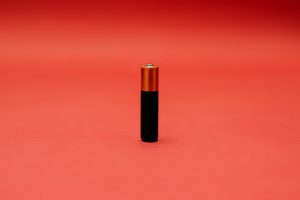
UPS (battery/flywheel backup) refers to a source of uninterruptible power or simply a Uninterruptible Power Supply. It is an electrical device to supply power to a computer or another load when the mains electricity or the input power source goes off.
A UPS is different from a standby generator or an auxiliary/emergency power source and they are available via a professional battery shop. The UPS provides a power supply instantaneously after the mains power source fails, thus protecting the equipment’s user from power interruptions.
A UPS uses one or more batteries and connected power circuits for equipment using low power, while it uses generators and flywheels for high-powered equipment.
While relying on battery power, smaller unit UPS can last for an uninterrupted duration of 5–15 minutes, which is sufficient time allowance for the user to organise an auxiliary power supply or to shut down the computer or other protected equipment.
UPS are not limited to specific equipment types and are often used to protect data centres, computers, and telecommunication equipment from unexpected power disruptions. Without the UPS, unexpected power supply/surge will likely cause injuries and fatalities to users and loss of earnings and data for business organizations.
UPS units vary in size, and rightly so. UPS units with a VA rating of about 200 are designed to support a single computer with no monitor, larger units with VA rating of more than 1MVA for will power an entire data centre, UPS units for buildings or manufacturing plants have a rating of over 300kVA.
Different Types of UPS Units
Modern types of UPS are categorized between on-line, line-interactive, or standby/offline systems units. Worthy to note, most UPS with a rating of less than 1kVA are either line-interactive or standby system units and usually are cheaper.
A line-interactive UPS works to position the inverter in line with the circuit. When the mains power supply is lost, a line-interactive UPS redirects the DC path of the battery’s current power from a charging mode to a power supply mode.
An on-line UPS uses the “double conversion” method to accept Alternating Current (AC) input, change the current to Direct Current (DC) for passage through a rechargeable battery (or battery strings), and invert back to AC of 120V/240V to power the protected machine.
Dynamic Uninterruptible Power Supplies (DUPS) are sometimes used to power large power units. Asynchronous motor/alternator is connected utilizing a choke at the mains power.
Electrical energy in DUPS is stored in a flywheel. If the mains power goes off, the regulation for Eddy-current maintains the power supply to the load. DUPS may be combined with a diesel-generator to form a Diesel Rotary Uninterruptible Power Supply (DRUPS).
In recent technology, manufacturers have developed UPS with a hydrogen fuel cell to supply power over a relatively long duration.
Design of the Standby/Offline UPS
A Standby/offline UPS system (SPS) serves the most fundamental role of protecting a piece of equipment from power surges and acting as a backup battery.
When using the Standby/Offline UPS, a user’s equipment is connected directly to the mains power supply at standard voltage. The UPS’s protected plug strip is connected across the power line to protect the power load.
An internal storage battery powers the Standby/Offline UPS. It turns on its DC-AC inverter components when the voltage of incoming current drops below a preset mark. The Standby/Offline UPS then mechanically switches the DC-AC inverter output of the connected equipment. This time to switchover can be about 25 milliseconds at maximum based on how long it takes the Standby UPS to detect a variation of utility voltage.
UPS designs and specifications vary depending on the size and sensitivity to voltage variations of the equipment needing the UPS from a general outlook.
UPS are designed to serve specific equipment types such as Personal Computer without causing damage to the UPS itself of the protected equipment.


